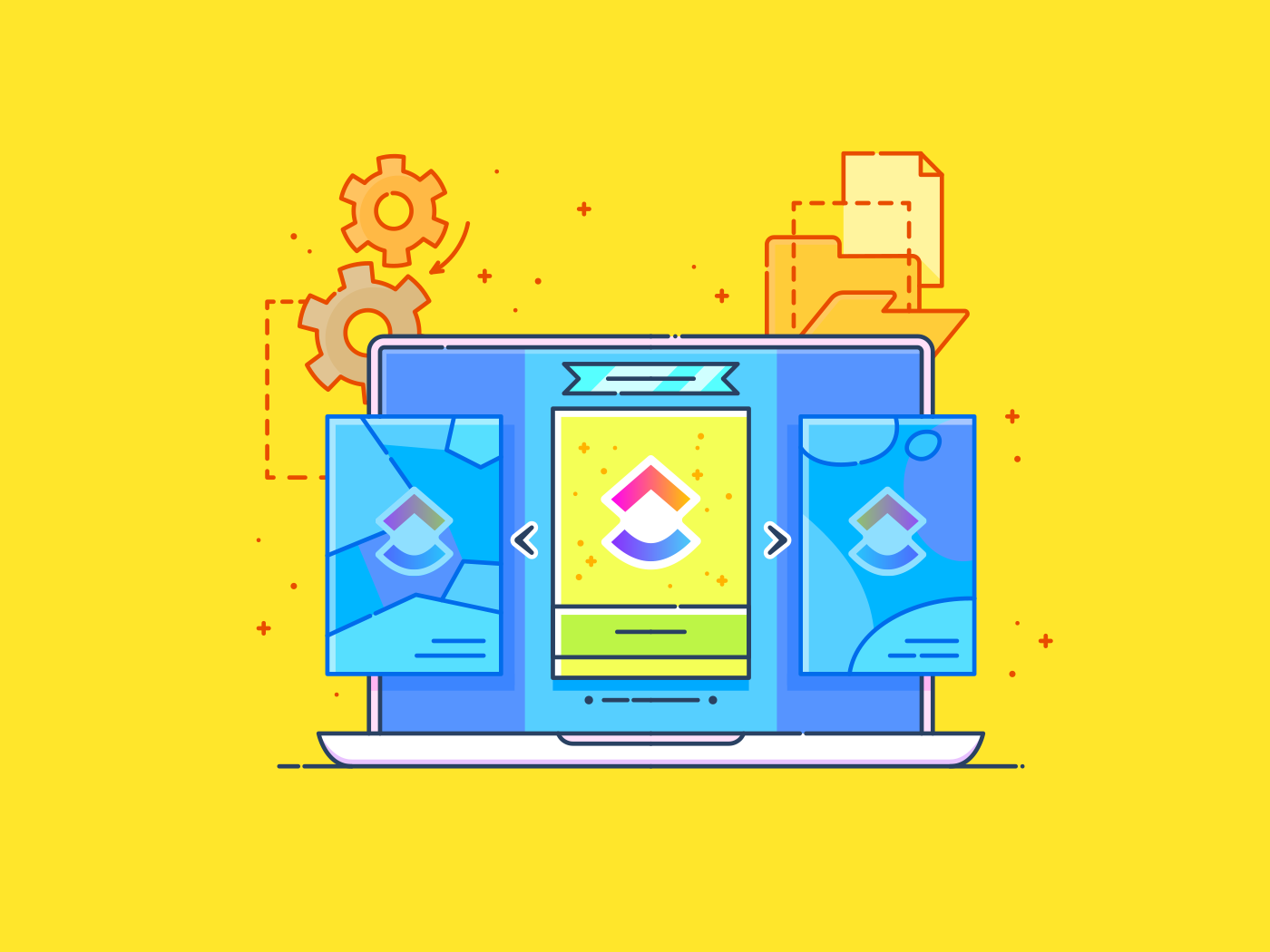Have you ever opened Account records only to find three almost identical copies, each containing a different email? Or find out that phone numbers are outdated, or Leads appear twice?
As a result, sales reps waste time, marketers target the wrong people, and reports cannot be trusted.
Insight:
According to the
Salesforce data is often described as the lifeblood of an organization, but like any vital resource, it needs to be kept clean and healthy.
Salesforce data hygiene refers to keeping your CRM information accurate, consistent, and free of clutter such as duplicates or obsolete records.
In fact, a
Bad data leads to wasted effort, frustrated users, and missed opportunities.
Maintaining data hygiene in a large CRM can feel like a daunting, never-ending task. Manually cleaning data, like merging duplicates, fixing field formats, and verifying details – is not only tedious but also vulnerable to errors.
Fortunately, today’s tools, including AI, can help put many tasks for data cleaning in Salesforce on autopilot. By leveraging built-in Salesforce features alongside AI-powered apps, you can continuously clean Salesforce data with minimal manual effort.
Here are seven practical strategies that will help you automate your Salesforce data cleaning and keep your CRM data in good shape.
Hack #1. Begin Data Hygiene in Salesforce With Duplicate & Matching Rules
One of the most basic and important defenses against messy data is stopping duplicates before they enter your CRM. This is where Salesforce’s native
- A Matching Rule defines the criteria for what constitutes a duplicate match – for example, Contacts with the same email, or Accounts with matching account names and cities. Salesforce lets you configure matching rules to be exact or fuzzy for various fields.
- Then, a Rule uses that logic to take action when a match is found: you can simply allow the save and flag the duplicate (so it appears in a report), alert the user with a warning, or completely block the duplicate from being saved.
Out of the box, Salesforce comes with some predefined matching rules (like for emails, phone numbers, etc.), which you can activate or clone and adjust to fit your business logic.
By setting up duplicate rules on key objects (Accounts, Contacts, Leads, etc.), you ensure no one accidentally adds a duplicate record that you’ll have to clean later. For instance, you might have a rule that prevents a Lead from being created if the email matches an existing Lead or Contact – instead, Salesforce can alert the user and even provide a link to the existing record.
Keep Your Rules Sharp With Regular Reviews
To maximize this, periodically review and refine your matching rules:
- Are they catching all obvious duplicates?
- Are they perhaps flagging too aggressively with false alarms?
Tweak the fuzziness and the fields used as you learn from actual data. And remember to set duplicate rules to report duplicates as well – Salesforce can group detected dupes into
One limitation of native rules is that they won’t merge records for you, they just prevent or flag them. That’s where advanced tools come in, but before we explore these advanced solutions, let’s look at another crucial piece: catching bad data at the point of entry.
Hack #2. Block Bad Data at the Point of Entry With Validation Rules
Beyond duplicates, typos, missing values, and inconsistent formatting can damage a CRM and make reports less trustworthy. To maintain high data quality, it’s crucial to catch errors at the moment of entry. Salesforce Validation Rules are your friends here, as essentially automated data gatekeepers that ensure each record meets your standards before it’s saved.
A validation rule checks the value in one or more fields against a formula you define, and if the rule’s condition is not met, it prevents the record save (displaying an error message). This is a simple yet powerful way to enforce conventions. For example, you can require:
- that every Opportunity has a close date in the future;
- that a Contact’s email address contains “@”;
- that a custom Status field is not left blank if Stage = Closed Lost.
If a user tries to save a record violating those rules, Salesforce will prompt them to fix it.
Examples of Data Validation Rules in Action
By using validation rules strategically, you perform a form of data cleaning in Salesforce at the point of entry – preventing messy data from ever entering your system. Common data hygiene rules include:
- Mandatory fields: For example, phone number must be filled in for leads.
- Value ranges: E.g., Opportunity Amount cannot be negative.
- Cross-field consistency: For instance, if Stage = “Closed Won”, then Won Reason must be populated.
Every organization’s needs will differ, so it’s worth auditing your data for frequent issues and then creating validation rules to catch those.
Tips for Building Smart, Usable Validation Rules
Keep in mind that validation rules focus on format and simple logic, not whether the data is accurate in the real world. They can ensure a phone number field contains digits, but not that the number actually reaches a real person. Don’t make too many strict rules – only enforce what truly matters for usability and reporting. And always communicate with your users about why a rule is in place (provide a helpful error message). When properly implemented, validation rules act as an automated cleanse, stopping a lot of garbage data at the gate.
In practice, validation rules working alongside duplicate rules significantly reduce the downstream workload of cleaning your Salesforce. Your team won’t have to fix as many mistakes later because fewer will get through initially.
With validation and duplicate rules covering the basics, it’s time to address more complex and large-scale cleanup: automating the detection and merging of duplicates.
Hack #3. Automate Salesforce Data Cleanup With AI-Powered Deduplication
Once you’ve built a solid foundation with Matching, Duplicate, and Validation Rules, the next step is to de-duplicate your data in a more complex or large-scale manner. Duplicates are a top cause of unclean data. They inflate your org with duplicate records, make it hard to find the “single source of truth”, and can even lead to embarrassing mistakes like contacting the same customer twice.
And since we already rely on automation in so many areas of CRM, why not let AI help here too? It’s already everywhere: powering recommendations, emails, and reports. So yes, it makes perfect sense to use AI against duplicates. In fact, several tools built specifically for Salesforce use machine learning to spot and clean up duplicate records much more effectively than manual methods or rigid rule-based systems.
The good news is that using these tools doesn’t require reinventing your process. The first step is still the same: identify and merge duplicate Accounts, Contacts, and Leads. But instead of combing through records manually, you can now rely on AI-powered deduplication apps to handle it on autopilot, faster, smarter, and more consistently.
Salesforce provides basic Duplicate Management out-of-the-box: Matching Rules to define what a “match” is and Duplicate Rules to flag or block duplicates on save. However, these rules require manual setup and cover only straightforward scenarios.
How AI-Powered Deduplication Works
To go beyond basic duplication handling, consider an AI-powered deduplication app from AppExchange.
Using an AI deduplication solution, you can automatically scan and merge duplicate records on a regular basis. Advanced platforms using AI can effectively identify duplicates, present them side-by-side for review, and then merge or convert records in a few clicks. They can even handle cross-object duplicates (for example, preventing a new Lead that matches an existing Contact).
For example,
Benefits of Letting AI Handle Deduplication
A huge bonus of letting AI handle this heavy lifting is consistency – the AI can be trained to apply your unique logic every time, ensuring no duplicate is left unchecked. Plus, you maintain control: you can usually set rules for how merges should pick master records or field values, and better tools include safety nets like audit logs and Undo functionality in case you need to reverse a merge.
In short, Salesforce data cleanup can be dramatically accelerated by AI. You’ll free your team from painstaking manual dedupe work while boosting data quality.
Whichever deduplication method you choose, start by running a full duplicate scan to see how big the problem is, then schedule it to run regularly. More on scheduling in Hack #6.
Hack #4. Standardize and Clean Salesforce Data with Automated Formatting
Even with good entry controls, data in Salesforce can vary in format over time. One user enters “CA” for state, another writes “California.” Some accounts have names in ALL CAPS, others in Title case. These inconsistencies might not seem critical, but they can hamper your ability to segment, search, or roll up data effectively. That’s why a key aspect of Salesforce data clean up is data standardization – making sure that important fields follow a consistent format or set of values.
Built-In and AI-Powered Formatting Tools
Salesforce offers some native help here, like picklist fields to restrict values and state/country picklists (to standardize those inputs). You can also use formulas or workflow rules to auto-format certain entries. For example, a formula field to display phone numbers in a uniform (XXX) XXX-XXXX format. However, maintaining consistency at scale often calls for specialized tools or scripts. This is another area where AI and automation can step in.
Data cleansing tools provide Transform Rules – essentially find-and-replace or reformatting rules that run through your data to normalize it. For instance, you could configure a rule to convert any instance of “United States” or “U.S.” or “USA” to a single preferred value across all records. For example, the previously mentioned
Automation for Ongoing Data Consistency
Another smart approach is using Flows or Apex triggers in Salesforce to clean or standardize data automatically. For example:
- Before-save Flow could automatically capitalize the first letter of a last name or trim extra spaces from an input.
- A trigger could enforce that Account names don’t contain certain special characters, etc.
With the power of Flow (no code needed in most cases), admins can set up many such autopilot formatting fixes.
By normalizing things like abbreviations, phone number patterns, address components, etc., you not only make your data look clean but also improve its usefulness. Reports won’t accidentally treat “NY” and “New York” as different regions, and filters can catch all relevant records without complex logic. Consistent formatting also helps duplicate-matching algorithms do a better job, though good AI matching can often recognize variants even if not standardized.
In summary, take the time to define standards for your Salesforce data and use automation to apply them. Your goal is a single, clean version of each data point, whether that’s ensuring consistent state codes or uniform naming conventions. This data cleaning Salesforce process might involve some one-time mass updates and then ongoing rules to keep things in line, but it pays off in smoother reporting and easier maintenance in the future.
Hack #5. Validate and Enrich Data to Minimize Salesforce Cleanup
Beyond formatting, data quality depends on correctness and completeness. It’s one thing to have a phone number in the right format; it’s another for that phone number to actually work. Similarly, a lead with an email like “[email protected]” might pass a validation rule for format, but is it a real, deliverable email? Is the mailing address valid?
How Third-Party Tools Help With Data Verification
Automated data verification is a hack that uses external services to ensure your Salesforce data isn’t just well-formed but also accurate.
Salesforce’s Validation Rules can’t confirm an email or address is real – for that, you’ll need to tap into external datasets or APIs. Luckily, there are AppExchange apps that specialize in this. For example, Experian Data Validation, Clean Suite for CRM from Melissa, ZoomInfo, DataGroomr, etc., provide such capabilities to Salesforce users. These tools can check emails, phone numbers, and addresses against live databases. They use algorithms to validate that an email’s domain exists and can accept mail, that a phone number is active, and that a mailing address is deliverable.
By integrating such a service, you could automatically flag or even update records that have bad contact information. Imagine an incoming lead with a likely fake phone number “1234567890”. Automated checks can mark that as invalid or send it to a queue for research, preventing your sales reps from wasting time. Likewise, address verification can standardize addresses to USPS format and mark undeliverable addresses, improving your campaign reach rates. These processes can be run in bulk on your existing database as well to scrub legacy data.
Fill In the Gaps With Data Enrichment
Enrichment is the flip side of verification – using AI to add missing but valuable information. For instance, you might use an enrichment tool to auto-fill a lead’s company industry and size based on their email domain or to append LinkedIn profile URLs for contacts. Salesforce’s own Einstein features and third-party AI services can predict or recommend data to add. While enrichment goes a step beyond hygiene into enhancement, it certainly supports the cause: a more complete record is a cleaner record that users don’t have to manually research.
The key is to automate these checks and updates so they run continuously or on a schedule (say, nightly or weekly), rather than relying on humans to catch inaccuracies. This will significantly reduce the accumulation of junk data, meaning less Salesforce cleanup is needed in the future. When new records enter Salesforce, have an automated process, via Flow or a third-party app, verify core fields like email and address. For existing records, run periodic bulk checks to catch data that has gone stale. For example, an email that started bouncing or a contact who left a company – some tools can detect these via bounce data or external databases.
By validating and enriching your data using AI, you maintain a high-quality database where records are not just properly formatted but also actionable and trustworthy. Your sales and marketing teams will thank you when they no longer have to double-check every email or hunt for missing info.
Hack #6. Schedule Regular Salesforce Data Clean Up Jobs
Data maintenance isn’t a “set it and forget it” task – it’s about constant support. The best way to ensure ongoing cleanliness is to schedule your cleaning processes to run automatically. Salesforce has options for automating various tasks (like scheduled reports, dashboard refreshes, or Apex jobs), and many data quality tools provide scheduling features as well. The idea is to define how often you want a certain cleanup activity to occur, then let the system carry it out in the background.
For example, you might schedule a weekly duplicate scan and merge job to keep on top of dupes. Advanced AI deduplication solutions allow you to set up recurring duplicate analysis and even automate mass merges on a chosen cadence. You could configure it so that every Friday evening, the tool finds all new duplicate groups and merges those that meet your predefined criteria – truly hands-free automated deduplication. Similarly, you could schedule a monthly verification run, using the verification service from Hack #5, to re-check all emails and phones, since data can decay over time.
Use Flows, Apex, and Reports for Custom Automation
Salesforce administrators and developers can also leverage scheduled jobs – for example, a Scheduled Flow or Batch Apex – to perform routine data cleanup. For instance, a scheduled Flow could run nightly to find any Accounts created without a region and fill in a default or to close tasks that haven’t been updated in 3 years. A Batch Apex job could be written to clean up or archive records that meet certain conditions, e.g., leads marked as disqualified over 2 years ago.
Don’t forget about scheduling simple reports as well. You can schedule a report to be emailed to data stewards highlighting potential data hygiene issues (like “Contacts Created Last Week Missing Email”). While that’s not an automated fix, it ensures someone is prompted to take action regularly.
Let Automation Do the Work
The benefit of scheduling these tasks is that your data cleaning Salesforce routines happen consistently. Humans procrastinate or forget, but a scheduled job won’t. By spacing out heavy jobs to off-peak hours, you also avoid impacting users during the workday. Essentially, you create a self-cleaning Salesforce org: duplicates are removed, fields get standardized, and invalid data gets flagged or removed, all on a regular cycle without any need for manual intervention each time.
Setting up scheduled data clean-up jobs might require some initial work (and testing to be safe), but once in place, it’s like having a diligent housekeeper for your CRM. Your data hygiene processes become proactive and predictable, not just reactive emergency actions when things get out of control.
Hack #7. Monitor Salesforce Data Hygiene with Reports & Dashboards
The final hack is about visibility. To truly maintain Salesforce data hygiene on autopilot, you need to continuously monitor the state of your data so you can catch new issues early. Salesforce’s reporting and dashboard capabilities are great for this. By creating a Data Quality Dashboard, you can keep key metrics in front of you and prove that your other hacks are working.
What might you include in a data hygiene dashboard? Here are a few ideas:
- Duplicate Record Counts: For example, the number of duplicate record sets detected this month (if using native duplicate reporting or a third-party app’s logs). Ideally, this number trends down or stays low over time.
- Data Completeness Scores: For instance, what percentage of contacts have essential fields, like email or phone, populated, or what fraction of Accounts have an industry? Low percentages might indicate areas where you need better processes or additional rules. Salesforce Labs actually offers a free
Data Quality Analysis Dashboards App that includes pre-built reports for completeness and other data quality metrics on standard objects. - Validation Rule Exceptions: Tracking how often validation rules fire can be tricky, but you might indirectly measure it (for instance, count records with a value like “Unknown”that users use to bypass a rule). If you notice workarounds, it might indicate a rule that needs adjustment.
- Recently Merged Duplicates: If using an app that logs merges, show how many duplicates were merged this week/month. This highlights the impact of your deduplication efforts and also ensures merges are happening regularly.
- Records with Data Quality Flags: If you use any kind of flag field for bad data, e.g., a checkbox “Invalid Email” that gets set by an automation, report on how many records are flagged and trend it over time. A spike might signal an issue (say, a surge in false leads from a web form).
Stay Ahead with Proactive Monitoring
By monitoring these and other indicators, you create a feedback loop. The dashboard can be reviewed in a weekly meeting or by an admin at a glance. If something spikes – say, duplicate count jumps unexpectedly – you’ll know to dive in and adjust your rules or processes. Essentially, the reports and dashboards act as an early warning system for data hygiene issues.
Additionally, consider using Salesforce Report Subscriptions to send automated emails of critical data quality reports to record owners or managers. For example, you might send each sales team manager a monthly report of their open opportunities missing Close Dates. This way, the responsibility of clean data is shared with the team, but the process to remind people is automated.
Watch for Trends and Changes
Lastly, keep an eye on Salesforce’s own evolving toolset. As Salesforce continues to infuse AI into the platform, we may see more built-in intelligence for data quality, for instance, Einstein might flag unusual data or suggest cleanup actions in the future. Staying proactive with dashboards prepares you to take advantage of such features by having well-defined metrics and targets already in place.
Wrapping Up: Don’t Wait for a Data Disaster, Take Control of Data Hygiene Now!
Good data hygiene is not a one-time project, it’s an ongoing discipline. But with the right mix of Salesforce features and AI-powered helpers in your toolkit, much of the heavy lifting can indeed run on autopilot. We’ve covered how to tackle duplicates, enforce standards, validate information, and keep processes running continuously. Implementing these seven hacks will make your data cleaning efforts proactive rather than reactive.
The benefits of keeping data hygiene under control in Salesforce are enormous: users trust the CRM more, analytics and AI models yield more accurate insights, and your team saves countless hours that would otherwise be spent scrubbing spreadsheets. In short, clean data translates to efficiency and better business outcomes.
Start by assessing which of the areas above is your biggest pain point – maybe you have a duplicate nightmare to solve, or perhaps incomplete records are preventing you from reaching out. Prioritize a solution there, deploy a tool from AppExchange, set up a rule, or build a Flow, and gradually layer on additional automations. Over time, you’ll build a self-sustaining ecosystem where cleaning Salesforce data requires very little manual effort.
Maintaining high-quality CRM data might never be “fun”, but it doesn’t have to be endless manual labor.
Let Salesforce’s native features handle the basics, and let advanced AI tools handle the complex and routine ones. With these hacks in place, you can achieve the level of data hygiene Salesforce orgs need – and keep it that way – while your team focuses on using that data, not cleaning it.



















